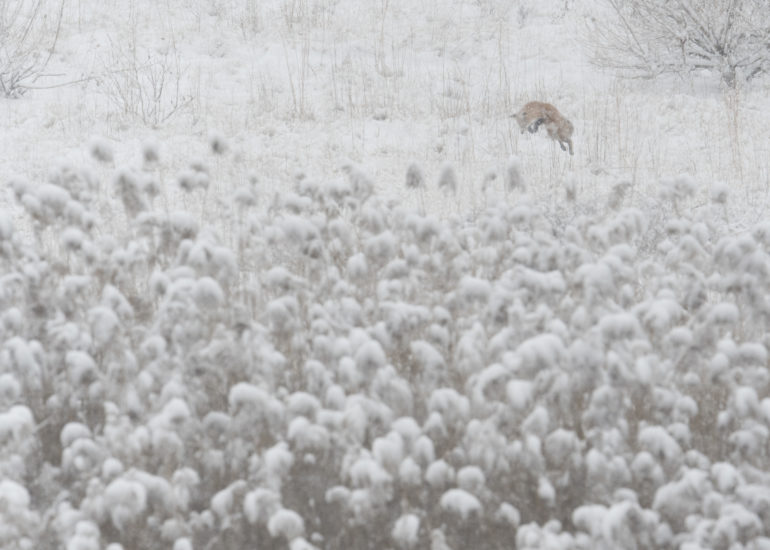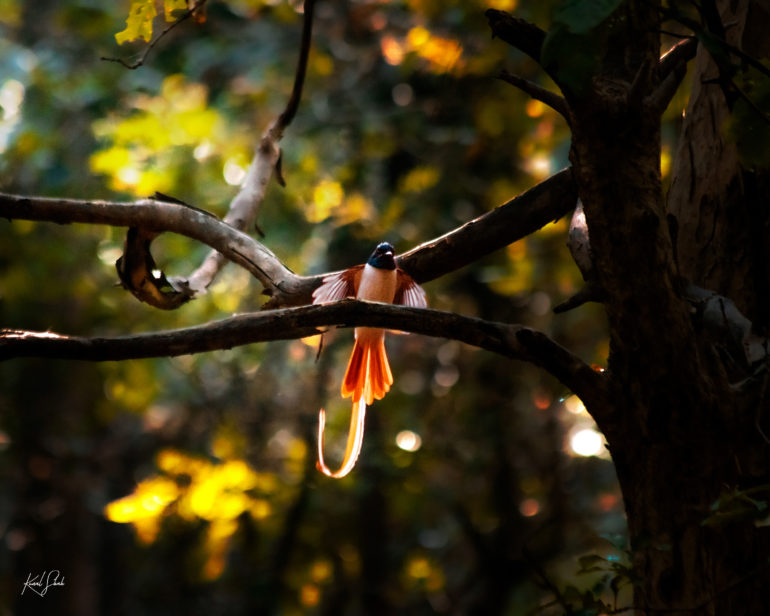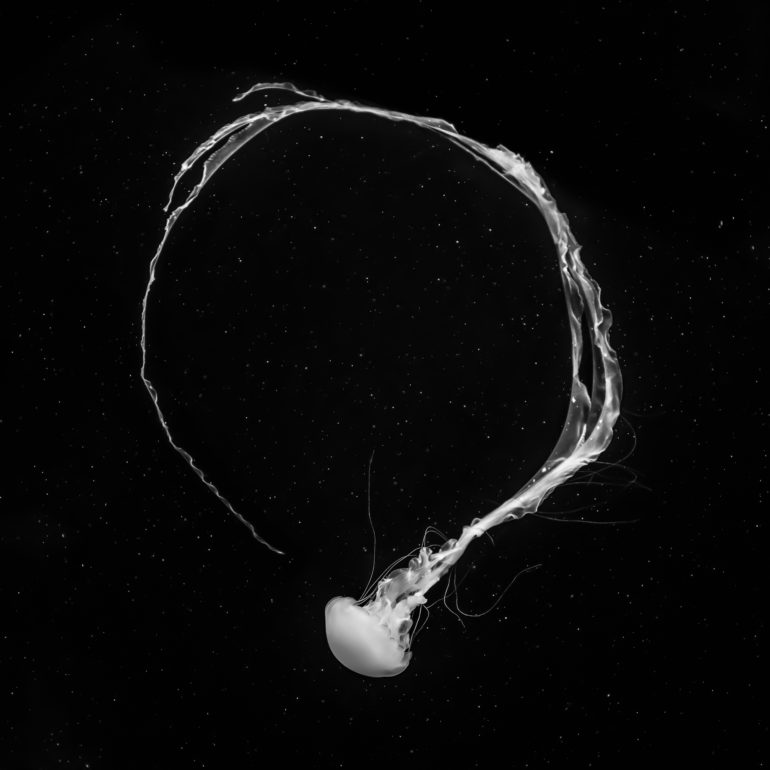
Wildlife photography has been one of the most sought-after genres since the inception of the medium. Since the industrial revolution, rapid urbanization, climate crisis, and many more events and incidents have impacted our wildlife, driving many species to extinction. Thus, wildlife photography is the best way to bridge the gap between us and animals and remind us that they are as much a part of our ecosystem as theirs. This has possibly been achieved with the help of the ever-evolving genre, which not only spreads awareness but also showcases the fragile beauty of our planet. As a result, we bring this round-up to appreciate our environment, its flora, and fauna and see the evolution of wildlife photography in the past decade.
The lead image is Carolina Fraser. All images are used with permission.
Matthew Gillooley
One of the most important things wildlife photography teaches you is about animal relationships. The image above depicts that animals, like humans, have feelings and emotions, which can be showcased wonderfully if the photographs are timed well. The two lionesses touching each other’s heads could be a sign of love, care, and camaraderie, something we have often seen humans do in movies. Touching heads and sharing space is a sign of trust and respect, and the image depicts that. The layer of grass in the foreground also adds a lovely touch as the sun reflects on it.
In his interview with us, Matthew said:
I’m attracted to shooting wildlife because I believe that people need to see the beauty of the world around them so that it can be protected. My goal is to inspire others to care enough to help with conservation.
Ralf Schneider

Another thing that wildlife photography has taught us is while we want to capture the beauty of the natural world, we must do so ethically. The image above is an example of that. Photographer Ralf Schneider captured the image as the seal rested calmly, documenting its serene expression. This is also a side of animals that we continue to miss, especially in zoos when people treat animals as circus clowns. They want the poor creature to react, which never turns out well for anyone. The seal’s expression in this picture is almost human-like, as if it had found Nirvana in its sleep. The folded arm is certainly adorable as if it is hugging itself in its dreams. Had this been a wide-angle shot, we would never be able to appreciate its adorable face.
In our interview with him, Ralf said:
Our earth and our unique nature are not doing well. It is unbelievably sad and stupid. The burning of rain forests, mass animal husbandry, the pollution of the seas, and the mistreatment of animals is unfortunately factual and is carried out daily on our planet. It is important that we show these abuses again and again in pictures and stories. Aside from depicting the negative events, showing the positive, small “victories” is just as important to sensitize and motivate people for nature conservation.
Carolina Fraser

Winner of the 2015 Audubon Photography Awards, Carolina Fraser’s images are nothing short of magical. Her photographs appear like a sliver of a second captured from many exceptional stories in the wildness. The image above depicts one such moment. The photograph does not have a beginning or an end but rather a climax point. In wildlife photography, photographers are visitors of such moments a lot of times, but some, like Carolina, document them to showcase their beauty and significance. The image is layered really well, with the fox up in the air is just a small part of a larger story. Had the fox been in the middle of the frame, the image would not have had such an impact.
In her interview with us, she said:
For me, when I shoot, I instinctively shoot artistically vs. a point and shoot documenting shots. For that creativity to become instinctual, it’s important to study other paintings, photos that you like, questioning why you like the photo you do… why do the layers work….
Paul Boomsma

With a range of editing tools, a new style of wildlife photography has emerged: one that emphasizes stylized editing. For instance, this puffin portrait has many colder tones and great use of deep blacks, highlighting its cool grey eyes and orange beak. The warmer tones stand out, but they do not scream for attention. Instead, the eye gets your attention first, followed by the beak and then the rest of the frame. Boomsma certainly knows how to hold your attention with the lay of tones and softer background, something that you don’t see too often.
In an interview with us, Boomsma said:
With some of my wildlife images, especially close-up portraits, a lot of the darkening and overall mood is done in-camera. I do this by trying to position myself somewhere where I can get the sunlight to illuminate the subject and have the rest of the scene in the shadows. I then expose my image for the subject so that it darkens the rest of the scene. This really helps separate the subject from the scene and create a really dark, intimate image.
Hiren Vekaria

Unlike other photographers on the list, Hiren’s images appear like cinematic frames taken from a movie. That’s because he is very particular about how he photographs and edits his images. For instance, layering is a crucial step in the picture. the foreground makes the frame more appealing, drawing your eyes directly to the zebras. However, later, you gradually see how their backs also resemble the mountains behind them. Furthermore, the patterns of the grass mimic those on the zebra’s body, while the back and white of the mountains and the clouds also mime the colors of the animals. The same photograph, in color, would have lost its charm.
In his interview, Hiren told us:
As with most things, patience reaps the rewards. I never expected to get the perfect shot the first time around. There have been many occasions where it was a waiting game. Wild animals are just that, wild. You can’t direct them; you can’t always predict their movement or reactions to things, so you have to be ready. My shots tend to be taken at eye level or lower. Any budding photographer should know that the best shots draw you into the image, and being at eye level is the best place to be for most shots.
Justin Sullivan

While wildlife photography depicts the somber and more beautiful side of our world, there is also a dangerous and gruesome layer that many are scared to explore. For instance, poaching and killing animals for their skin, horns, or teeth are some of the harshest realities that only a handful of individuals show. Justin is one of them. This image of the dead elephant is painful and enraging. This photograph of a poached elephant won the Andrei Stenin International Press Photo Contest 2019. However, an image like this is needed to shake up our society from its deep slumber. The aerial photograph reveals how greed drives humans to attack animals in their wild habitat and how we are the culprits of the ongoing animal and human conflict. Justin further added the aerial photograph helped him to draw the viewer in without showcasing blood and gore,
In his interview, Justin told us:
When I came across the elephant, I was so focused on ensuring that I captured it in such a way that it would be impactful enough so this elephant didn’t have to die in vain. I didn’t really have time for introspection. I acknowledged the gruesome manner in which this elephant had died and I kept thinking to myself how on earth could anyone do this, but it was only later that afternoon that I spent time contemplating my emotions. Naturally, I was very disturbed. To this day I have mixed emotions about it, but I always [trust] the conversation in my heart [and] knowing that the ‘disconnection’ image was shown around the world and reignited a very important conversation around poaching and conservation.
Kunal Shah

An Indian wildlife photographer, Kunal has witnessed various beautiful and challenging moments outdoors. However, his photographs, often shot in the golden hour, showcase a rather warm side of the wilderness. The image above, for instance, will draw your attention to the tale of the bird, which has been backlit; then, it gradually draws your attention to the bird’s face and its wings. The branch behind helps to highlight the shades of its wings, while the green and golden leaves add shimmer to the whole frame. The soft glow is another touch that helps to make the bird stand out while making the whole scene look like a moment plucked from a fairytale.
In his interview with us about wildlife photography, Kunal said:
I have come across a variety of instances of malpractice that some people resort to just to get a few “good” photographs. Some of them include luring wildlife by giving them food or playing recordings of mating calls to attract birds. Others include getting so close to wildlife that it disturbs their daily activities, using powerful flashguns to photograph nocturnal life, or simply not caring about the habitat. All of these practices are very dangerous for wildlife.
Amir Saidi

Amidi’s wildlife photography is quite distinct as it seems to remove the background from the picture. One sees a hollow, ghost-like version of the animals, which, while artistic, can also be used to focus on other conservation. The image of the jellyfish, for instance, is ethereal. Its smooth motion makes it appear like it is Dancing, while the blackness in the background with water particles appears like a galaxy. It certainly seems it is floating in space, but while it does so, it also urges us to think about what our ecosystem will look like in their absence.
The funny thing is that I hadn’t really noticed that since all the work I do is in color, but perhaps subconsciously, I choose black and white because it feels less distracting and less cluttered to me. I think it is more pure and raw, which is how I see animals.

